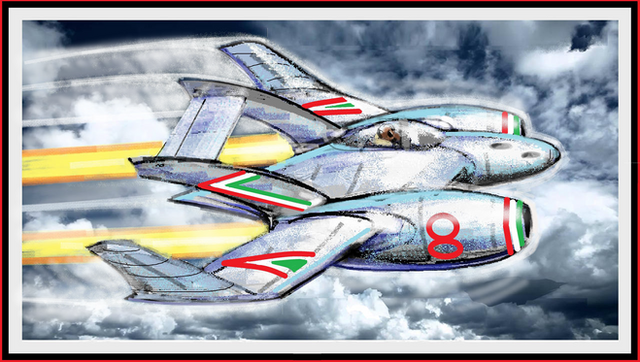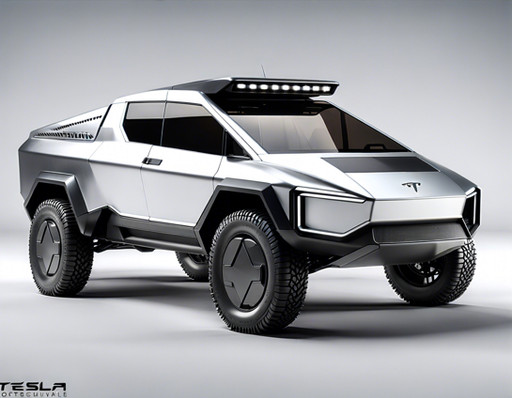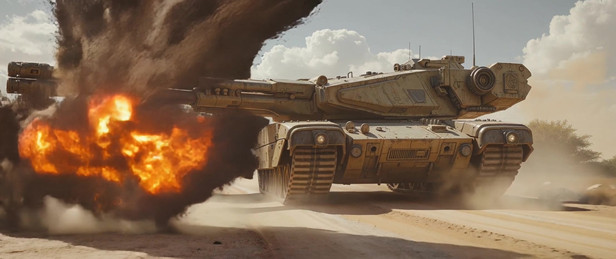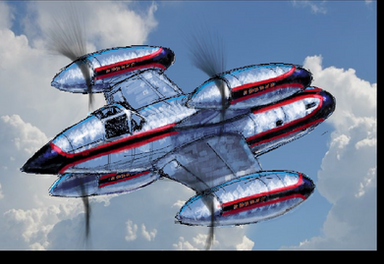HOME | DD
 Jimbowyrick1 — Grumman-Veeblefitzer F5F-2 Sea Rocket
Jimbowyrick1 — Grumman-Veeblefitzer F5F-2 Sea Rocket

#aircraft #concept
Published: 2019-01-05 00:40:43 +0000 UTC; Views: 3814; Favourites: 68; Downloads: 12
Redirect to original
Description
Confronted with the problems associated with the Grumman XF5F-1 Sky Rocket (see Wikipedia biography), Grumman Aircraft Corp. invited genius aircraft designer Prof. Anton Veeblefitzer, to come over to New York, and throw in his two cents worth of ideas on fixing up the new XF5F-1.The XF5F-1 Sky Rocket had promise in becoming a potent weapon for the USN in the late 1930's. Twin motors with counter rotating prop's canceled out propeller torque, and with outstanding forward visibility, it made for safe landing on aircraft carriers.
Armament, for the time, was a potent 4 x .50 cal machine guns located in the craft's nose.
Twin Wright R-1820 radial motors, rated at 1,200 hp each, powered the machine, and it was equipped with self sealing fuel cells and armor protection for the pilot.
Prof. Veeb' fixed the weak landing gear and oil cooler problems quickly, and the War Dept., impressed with the aircraft's performance, ordered 20 prototypes which were assigned to CV-6 USS Enterprise's fighter squadron.
The pilots were ecstatic about their new mount, and insisted that the F4F Wildcat project be cancelled in favor of the Sky Rocket.
Prof. Veeb' saw room for further improvement of the design, and eliminated the complex twin-tail of the -1, and replaced it with the single tail that was meant for the F4F Wildcat. The Wildcat tail was already in production, and this greatly sped up delivery of the new craft.
The twin Wright R-1820 motors were equipped with multi-stage superchargers and the motor nacelles were lengthened to accommodate the larger, stronger landing gear.
The height of the canopy was slightly reduced and the canopy frame was beefed up to handle the expected shocks from carrier landings.
The supercharged Wright R-1820 motors, now capable of 1,300 hp, propelled the craft to speeds up to 396 mph (!) at 18,000 ft., making it the fastest fighter in the world in 1941 (except for the prototype XF4U Corsair).
The new F5F-2 "Sea Rocket", as it was now renamed, could out climb ALL existing fighters in the world, and at lower speeds could easily turn inside the British Spitfire.
When war came to America, in this particular alt' universe, the Sea Rocket proved to be a nasty surprise for the Japanese A6M Zero pilots, as it could easily out speed and out climb the Japanese craft.
Pictured are the prewar F5F-1 Sky Rocket, and the early war 1942 F5F-2 Sea Rocket, both in USS Enterprise markings, the latter devastating enemy aircraft during the USN counter attacks on Japanese positions in the Marcus Islands and Wake Island raids.
So excited by the success of the Sea Rocket, that Grumman abandoned the F6F Hellcat design, and went straight to the F7F Tigercat twin motor design.
Later during the war, the Sea Rocket was further improved, but was relegated to service aboard the smaller escort and jeep carriers assigned to support American ground forces, which the craft excelled at.
Two Sky Rockets and four Sea Rockets were restored years after the war, and are often seen flying at airshows around the country.
Related content
Comments: 25

Very great concept !!!
In advance to twenty years for sure , you can be a great airplane engineer and conceptor , like Sirkovsky (the creator of P-35)
Great work again
Friendly
👍: 0 ⏩: 1

👍: 0 ⏩: 1

Happy winter too
I'm 50 !!
Im pass already 49 Winters until then dear friend !!!
👍: 0 ⏩: 0

Super cool! It's a shame that advanced designs like these never really got to show their capabilities IRL, I'm so glad the Prof was able to get this one up to speed an in production in his timeline!
👍: 0 ⏩: 1

Yes!!!
It would've kicked Zero butts all over the Pacific!
👍: 0 ⏩: 1

Always had a softspot for the XF5F, It's probably the ludicrously short nose and massive engines.
👍: 0 ⏩: 1

Me too!
It's surprising that such an ugly duckling had some good performance abilities.
Typical Grumman "iron works".
👍: 0 ⏩: 0

Next step: Grumman-Veeblefitzer P-50C Super Rocket
👍: 0 ⏩: 1

"Hmmmmmm....., maybe!"
-Prof. A. Veeb'
👍: 0 ⏩: 0

It MUST have been a great aircraft or The Blackhawks wouldn,t have used it! LOVED that series!!!
I'll bet my bottom dollar genius aircraft designer Prof. Anton Veeblefitzer designed some of the weird aircraft The Blackhawks faced in WW2 and after!!!
👍: 0 ⏩: 0

"Thank you! Thank you! I'm so fab'! - Prof. A. Veeb'
👍: 0 ⏩: 1

*applauds*
Yes, you are very fab ,
very Fab indeed!😁
👍: 0 ⏩: 0

Me too!
It was ugly as heck, but according to the history, it had some very good performance abilities.
👍: 0 ⏩: 1

The comment about forward visibilty?
That... kind of goes away in a 'Tail dragger' on approach.
You need a way to make it a tricycle undercarriage... while keeping the fuselage behind the leading edge of the wing
Am sure the good Prof can think of something.
👍: 0 ⏩: 1

I was using the Wikipedia bio as a source. It said that forward visibility was good on approach, as the pilot didn't have a big engine cowl obstructing his view.
👍: 0 ⏩: 1

That is kind of true.
But my conversing with folks on aviation boards leads me to a different thinking.
Remember... 'Tail draggers' have a higher angle on approach than tricycle arrainged planes.
So 'Good visibilty' is kind of depending on whether it's just being compared to other tail draggers.
Remember the Corsair was rejected by the Navy because of its long, high nose up posture. The Marines and other export users loved it, though.
👍: 0 ⏩: 0

I'm just trying to think how does this airplane will be when it's on land... the fan looks big enough to touch the ground
👍: 0 ⏩: 1

Hi!
Check-out photos of the XF5F and you'll see the prop's had good clearance.
And have a good 2019!
👍: 0 ⏩: 1

Ah... I saw some, yeah, the wheel are large enough to avoid the fan touch the ground.
I wish you the same!
👍: 0 ⏩: 0


























